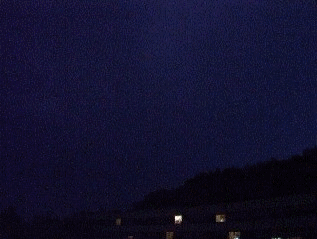Portal:Ecology
| |
|
|
Ecology
|
|
Ecology (from Ancient Greek οἶκος (oîkos) 'house' and -λογία (-logía) 'study of') is the natural science of the relationships among living organisms and their environment. Ecology considers organisms at the individual, population, community, ecosystem, and biosphere levels. Ecology overlaps with the closely related sciences of biogeography, evolutionary biology, genetics, ethology, and natural history. Ecology is a branch of biology, and is the study of abundance, biomass, and distribution of organisms in the context of the environment. It encompasses life processes, interactions, and adaptations; movement of materials and energy through living communities; successional development of ecosystems; cooperation, competition, and predation within and between species; and patterns of biodiversity and its effect on ecosystem processes. Ecology has practical applications in conservation biology, wetland management, natural resource management (agroecology, agriculture, forestry, agroforestry, fisheries, mining, tourism), urban planning (urban ecology), community health, economics, basic and applied science, and human social interaction (human ecology). The word ecology (German: Ökologie) was coined in 1866 by the German scientist Ernst Haeckel. The science of ecology as we know it today began with a group of American botanists in the 1890s. Evolutionary concepts relating to adaptation and natural selection are cornerstones of modern ecological theory. Ecosystems are dynamically interacting systems of organisms, the communities they make up, and the non-living (abiotic) components of their environment. Ecosystem processes, such as primary production, nutrient cycling, and niche construction, regulate the flux of energy and matter through an environment. Ecosystems have biophysical feedback mechanisms that moderate processes acting on living (biotic) and abiotic components of the planet. Ecosystems sustain life-supporting functions and provide ecosystem services like biomass production (food, fuel, fiber, and medicine), the regulation of climate, global biogeochemical cycles, water filtration, soil formation, erosion control, flood protection, and many other natural features of scientific, historical, economic, or intrinsic value. (Full article...) Selected article -Ecological art is an art genre and artistic practice that seeks to preserve, remediate and/or vitalize the life forms, resources and ecology of Earth. Ecological art practitioners do this by applying the principles of ecosystems to living species and their habitats throughout the lithosphere, atmosphere, biosphere, and hydrosphere, including wilderness, rural, suburban and urban locations. Ecological art is a distinct genre from Environmental art in that it involves functional ecological systems-restoration, as well as socially engaged, activist, community-based interventions. Ecological art also addresses politics, culture, economics, ethics and aesthetics as they impact the conditions of ecosystems. Ecological art practitioners include artists, scientists, philosophers and activists who often collaborate on restoration, remediation and public awareness projects. (Full article...) Selected image -Lightning is an atmospheric electrostatic discharge (spark) accompanied by thunder, which typically occurs during thunderstorms, and sometimes during volcanic eruptions or dust storms. The study of the atmosphere and atmospheric variables that affect various ecoregions and ecosystems is a significant part of the discipline of Ecology.
General imagesThe following are images from various ecology-related articles on Wikipedia.
Related WikiProjectsThings you can do
Entries here consist of Good and Featured articles, which meet a core set of high editorial standards.
 Disruptive coloration (also known as disruptive camouflage or disruptive patterning) is a form of camouflage that works by breaking up the outlines of an animal, soldier or military hardware with a strongly contrasting pattern. It is often combined with other methods of crypsis including background colour matching and countershading; special cases are coincident disruptive coloration and the disruptive eye mask seen in some fishes, amphibians, and reptiles. It appears paradoxical as a way of not being seen, since disruption of outlines depends on high contrast, so the patches of colour are themselves conspicuous. The importance of high-contrast patterns for successful disruption was predicted in general terms by the artist Abbott Thayer in 1909 and explicitly by the zoologist Hugh Cott in 1940. Later experimental research has started to confirm these predictions. Disruptive patterns work best when all their components match the background. (Full article...) Selected biography - Ann Fowler Rhoads (born 1938) is an American botanist who worked as a plant pathologist at Morris Arboretum for 36 years, retiring in 2013. She is the co-founder (with Timothy A. Block) of the Pennsylvania Flora Project of Morris Arboretum. In addition, Rhoads is a former adjunct professor at the University of Pennsylvania and a former Research Associate at the Academy of Natural Sciences. Rhoads has written and edited 6 books. Her most important work is The Plants of Pennsylvania: An Illustrated Manual, which she coauthored with Timothy Block. It has been called the "Bible of our state's plant life". It is particularly significant “because most states simply don’t have such a comprehensive work on regional flora. Relevant to plant life found in much of the Northeast, the book has also been requested in neighboring states." A second edition was published in 2007. (Full article...) Did you know (auto-generated)
Selected quote -Ecology news
Additional News Highlights
Selected publication -Checkerspot was a biannual climate change magazine in Canada published by the Canadian Wildlife Federation. A free magazine, its inaugural issue was launched May 2007 and stopped production in 2009 due to the economic downturn. The Canadian Wildlife Federation, one of Canada’s largest non-profit, non-governmental conservation organizations, works to protect Canada’s wild species and spaces. Checkerspot was used to advance activism on and promote discussions about climate change. (Full article...) Related portalsMore did you know -Related articlesAssociated WikimediaThe following Wikimedia Foundation sister projects provide more on this subject:
Web resources
Discover Wikipedia using portals |
















































